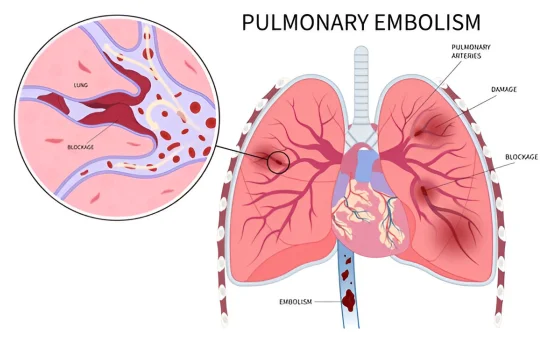Mouth disease affect millions of people worldwide and can significantly impact daily life by interfering with eating, speaking, and social interaction. From common issues like mouth ulcers and gum disease to more serious conditions like oral cancer, timely diagnosis and effective treatment are crucial.
Mouth diseases, often underestimated, are among the most common health issues affecting people of all age groups around the world. These conditions don’t just cause discomfort they can significantly impact your overall well being, self confidence, and quality of life. From a simple mouth ulcer that makes eating painful to more severe conditions like gum disease and oral cancer, mouth diseases can range from mildly irritating to potentially life threatening if left untreated.
What is Mouth Disease?
Mouth diseases refer to a wide range of conditions that affect the oral cavity, including the lips, tongue, gums, inner cheeks, and the roof and floor of the mouth. These conditions can result from bacterial, viral, or fungal infections, as well as from poor oral hygiene, nutritional deficiencies, tobacco use, or underlying medical conditions.
Some of the most common types of mouth diseases include :-
-
Gingivitis and periodontitis (gum diseases)
-
Oral thrush (candidiasis)
-
Canker sores (aphthous ulcers)
-
Herpes simplex virus (cold sores)
-
Leukoplakia and lichen planus
-
Oral cancer
Each of these conditions varies in severity and requires specific treatment based on its cause and progression.
Symptoms of Mouth Diseases
Recognizing the early signs of mouth disease is essential for prompt treatment. Symptoms may include :-
-
Persistent mouth sores
-
Bleeding or swollen gums
-
White or red patches in the mouth
-
Pain or burning sensation
-
Bad breath or altered taste
-
Difficulty chewing or swallowing
-
Loose teeth
If you notice any of these symptoms lasting more than 7–10 days, it is advisable to consult a dental or oral health professional for further evaluation.
Causes and Risk Factors
Mouth diseases can stem from a variety of causes. Poor oral hygiene remains one of the most preventable contributors. Failing to brush and floss regularly allows bacteria to build up, causing infections and inflammation. Other risk factors include :-
-
Smoking and tobacco use
-
Excessive alcohol consumption
-
A diet lacking in essential vitamins (especially B12, iron, and folic acid)
-
Chronic stress or trauma (like biting the inner cheek or tongue)
-
Hormonal changes (especially in women during pregnancy or menstruation)
-
Underlying health conditions such as diabetes or HIV/AIDS
Understanding these triggers can help in both prevention and treatment planning.
Treatment of Mouth Disease
Gum Disease (Gingivitis and Periodontitis) :- Gum disease is one of the most common and treatable oral conditions. Gingivitis, the early stage, causes red, swollen gums that may bleed. If untreated, it can advance to periodontitis, where the infection affects the supporting structures of the teeth.
Treatment includes :-
- Professional dental cleaning (scaling and root planing)
- Antiseptic mouthwashes
- Improved oral hygiene practices at home
- In advanced cases, surgical procedures like flap surgery or bone grafting
Mouth Ulcers (Canker Sores) :- Canker sores are small, painful lesions inside the mouth. They are usually harmless and heal on their own in 7 to 14 days, but treatment can speed recovery and reduce discomfort.
Treatment includes :-
- Over-the-counter topical gels or creams (like benzocaine)
- Rinsing with saltwater or baking soda
- Avoiding spicy or acidic foods
- Vitamin supplements if the ulcers are due to deficiencies
Oral Thrush (Candidiasis) :- Caused by an overgrowth of the fungus Candida albicans, oral thrush presents as white patches on the tongue, inner cheeks, and throat. It is more common in infants, older adults, and those with weakened immune systems.
Treatment includes :-
- Antifungal mouth rinses or lozenges (e.g., nystatin, clotrimazole)
- Maintaining good oral hygiene
- Managing underlying conditions such as diabetes
- Limiting sugar and yeast-containing foods
Cold Sores (Herpes Simplex Virus) :- Cold sores are caused by the herpes simplex virus (HSV-1) and typically appear as fluid-filled blisters around the lips or mouth. They are highly contagious.
Treatment includes :-
- Antiviral medications (acyclovir, valacyclovir)
- Over-the-counter creams for symptom relief
- Avoiding triggers like stress or sun exposure
Though there is no cure for HSV-1, medications can reduce the frequency and severity of outbreaks.
Oral Lichen Planus :- This chronic inflammatory condition can cause white, lacy patches or red, swollen tissues inside the mouth. The exact cause is unknown, but it is often linked to autoimmune disorders.
Treatment includes :-
- Corticosteroid ointments or rinses
- Immune-modulating drugs in severe cases
- Avoiding spicy foods and alcohol
- Regular dental monitoring to check for any precancerous changes
Oral Cancer :- Oral cancer can affect the lips, tongue, gums, and other areas of the mouth. It usually appears as a persistent sore or lump that does not heal. Early detection significantly improves survival rates.
Treatment includes :-
- Surgical removal of the cancerous tissue
- Radiation therapy and/or chemotherapy
- Targeted drug therapies for advanced cases
- Regular follow-ups to monitor recurrence
Quitting tobacco, reducing alcohol intake, and undergoing routine dental screenings are essential preventive strategies.
Role of Good Oral Hygiene in Treatment and Prevention
Regardless of the type of mouth disease, maintaining proper oral hygiene plays a pivotal role in both treatment and prevention. This includes :-
-
Brushing twice a day with fluoride toothpaste
-
Flossing daily
-
Using antiseptic mouthwash as prescribed
-
Visiting the dentist every 6 months
-
Eating a balanced diet rich in vitamins and minerals
Good oral habits not only help prevent future issues but also support faster healing during ongoing treatment.
When to See a Dentist or Specialist?
Any persistent change in your oral health such as ongoing pain, sores that do not heal, or unusual patches warrants professional evaluation. Dentists can perform routine exams, cleanings, and minor treatments, while oral medicine specialists or ENT doctors may handle more complex or systemic cases.
If a condition is suspected to be cancerous, a biopsy and further oncological assessment may be required. Early diagnosis and treatment can save lives.
Conclusion
Mouth diseases can range from minor irritations to serious, life threatening conditions. Knowing the symptoms, causes, and available treatment options can empower individuals to seek timely care and improve their overall oral health. Whether you’re dealing with gum disease, recurring mouth ulcers, or oral infections, the right treatment combined with good hygiene and regular dental visits can make a world of difference.























